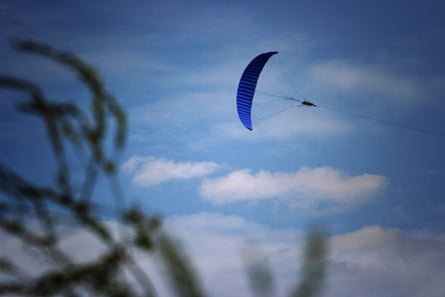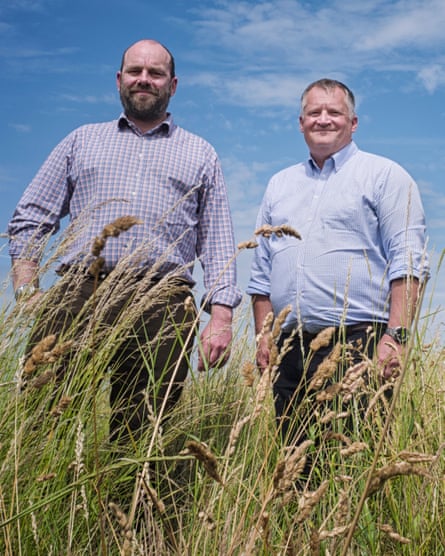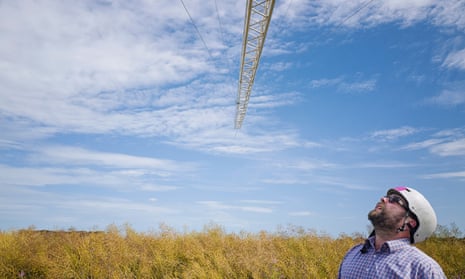Giant kites could supply green energy without the need for taxpayer-funded subsidies within years, according to one of the firms developing the technology.
Kite Power Solutions expects to open the UK’s first kite power plant in March 2017 at the Ministry of Defence’s West Freugh site in Stranraer, Scotland.
It hopes to roll out the technology onshore and at sea, building systems with the capacity to produce “hundreds of megawatts” of power within the decade.
The company believes the technology, developed by a handful of firms around the world, could slash the cost of wind energy supplied by conventional turbines. And it predicted that kite power would cost so little that developing countries would be able to use it to wean themselves off polluting diesel generators and other carbon-heavy energy sources.
The technology involves rigging two giant kites, each up to 70 square metres, to either side of a turbine. The first kite rises with the wind, up to a height of 450 metres, moving in a figure-of-eight pattern. The movement pulls a rope that turns a turbine, generating power.

As one kite descends, the other rises in tandem, meaning that electricity can be generated almost constantly.
A spokesman for Kite Power Solutions said the technology could halve the cost of offshore wind energy, dispensing with the need for governments to subsidise wind in an effort to reduce carbon emissions.
David Ainsworth said offshore wind energy was predicted to cost about 10 euro cents (9p) per kWh by 2022, meaning governments would be forced to pay the difference between that and the wholesale cost of energy, currently about 5.5 cents per kWh.
BVG Associates energy consultancy estimates that kite power could cost just five cents per kWh.

Ainsworth said the technology was easy to install and maintain, meaning it could be deployed in deep water, on floating structures far from shore. “If we do that, it opens up a global deepwater offshore wind market,” he said.
The technology could curb rising CO2 emissions in the developing world, where the need to save money forces people to resort to polluting technologies such as diesel, Ainsworth said.
The company has tested the technology on a small scale in Essex and will move its headquarters to Glasgow in readiness for next year’s launch. It has won planning permission for a 500kW demonstration system but plans to build a 3MW power station after that and is identifying other sites to develop.
A 3MW system would be comparable in power to smaller wind turbines but can produce up to 20% more energy, the company claims. It will also be less than 20% of the weight of a conventional horizontal axis wind turbine, which is made partly out of steel. The kite can fly higher than the tip of a wind turbine, reaching heights where wind tends to be stronger and more consistent.

The UK’s green energy trade body, RenewableUK, welcomed the technology but warned it was not a silver bullet. The deputy chief executive, Maf Smith, said: “This is an ambitious project to harness wind power at extraordinary heights and it shows the level of innovation within the renewables industry.
“Kite power is at an early stage of development and it will be interesting to see how the technology progresses. We will need a wide range of energy sources in the future to meet our needs in a sustainable way.”
Microsoft billionaire Bill Gates has said there is a 10% chance kite power could be the “magic solution” for global renewable energy needs.
Kite Power Solutions has received funding from the former Department of Energy and Climate Change, the Energy Entrepreneurs Fund and private backers. Its largest shareholders are Kite Power Solution’s chief executive, Bill Hampton, and chief operating officer, John Hardy.

Comments (…)
Sign in or create your Guardian account to join the discussion